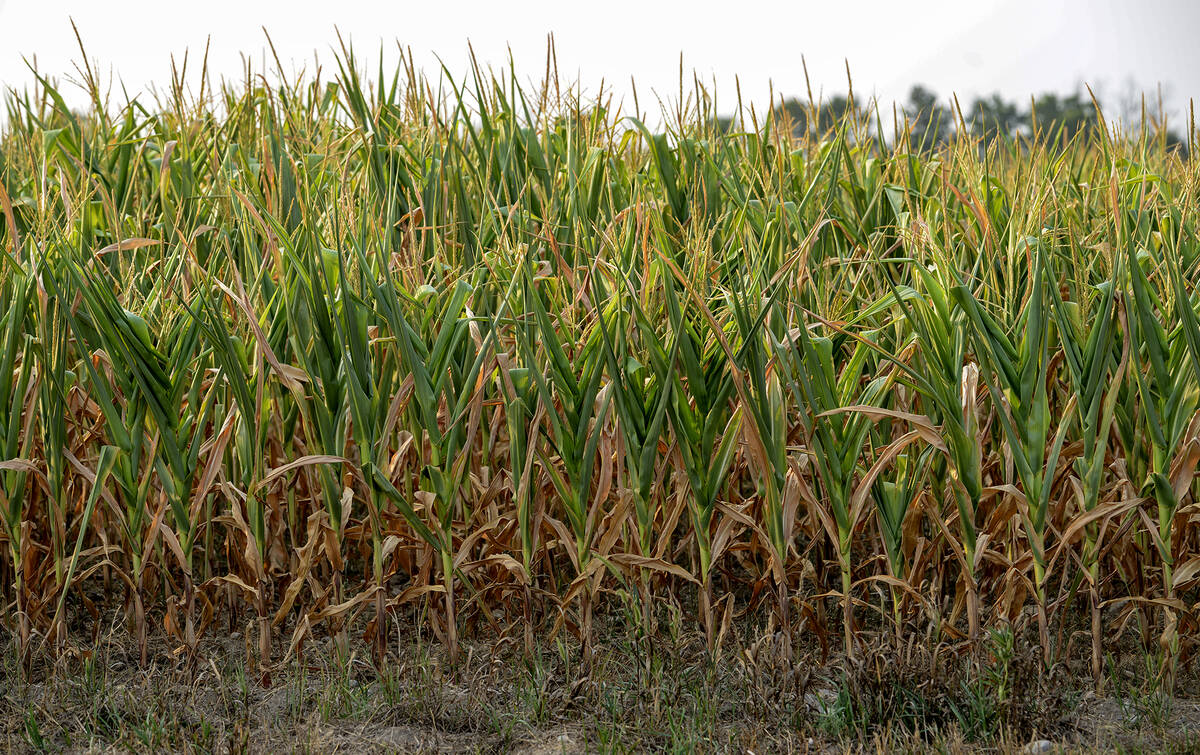A recently completed study into organic cash crop rotations added support to those who believe the moldboard plow still has a place in southwestern Ontario agriculture.
A team at Agriculture and Agri-food Canada’s Harrow research station will continue looking into alternative ways of terminating cover crops prior to corn.
Why it matters: Many organic farmers are concerned about damage to soil organisms done by moldboard plows. Further research could find strategies to reduce their reliance on the tool.
Read Also

Extreme variability marks Ontario’s 2025 corn crop
The yield potential of Ontario’s 2025 corn crop was lost in some areas due to extreme dry conditions.
The team, headed by Xueming Yang and funded through AAFC’s Organic Science Cluster, and by Grain Farmers of Ontario, published results in March on the performance of legume cover crops in an organic grain rotation in southwestern Ontario in the journal Frontiers in Soil Science.
Yang and his team had previously studied how the use of cover crops could reduce agricultural pollution of the Great Lakes and improve field-crop productivity with cover crop-fixed nitrogen. But, as noted in the introduction of the new study, “the best cover crop management options to maximize N for a following crop while maintaining or enhancing soil health remain largely unknown (for) organic corn, soybean and winter wheat production.”
According to Yang, the land used in both studies starting in 2013 was previously in a rotation including corn, winter wheat, soybean/white bean, and alfalfa, with rotations lasting at least six years.
“Fertilizers were applied to corn, winter wheat and white beans during that period,” he noted in an interview with Farmtario.
Much of the land (aside from a conventional control plot) in the organic study began a three-year transition into certified status in 2015. Three distinct cover crops – crimson clover, hairy vetch and red clover – were tested after winter wheat and corn, terminated either by moldboard or chisel plow prior to corn planting, followed by soybeans.
Establishment was either by seeding in the fall into wheat stubble or inter-seeding into standing corn at the five-to-seven-leaf stage.
The three cover crops were tried, Yang says, because “they become well established, continue to grow into winter, regrow vigorously the following spring and are easy to terminate.”
They’re nitrogen-fixing so “incorporating the legume biomass into the soil soon after termination provides sufficient nitrogen to the following corn crop.”
Soil and tissue samples were taken at various phases of the crop year to track soil health and nutrient removal by crops. Biomass levels were tested to track the cover crops’ contribution to soil health.
The transition phase showed these three years could be a drain on a farm’s financial resources.
“The organic premiums could not be applied,” said the recently published report. “This coupled with low yields in the organic corn and winter wheat resulted in significantly lower profits in the organic treatments compared with the conventional check.”
Wheat yields continued to trail behind conventional in the study years. Yang blames a shortage of nitrogen remaining in the wheat year of the rotation under organic management.
“Growers have two potential options,” he said. “They can either accept this slight yield reduction, considering it as relatively small when weighed against the benefits observed in organic corn and soybeans, or they can choose to supplement the organic wheat with organic nitrogen fertilizer.”
Corn yields in the organic plots recovered from their transition-phase declines. The study “confirmed that both summer-sown and frost-sown legume cover crops can be used as a primary N source for corn in rotation.”
But without the effects of that N fixation in the first year of the study, when no red clover had been frost-seeded and the plot under organic management allowed weeds to thrive, there was an “extremely low corn yield” in the first transition year.
The following year, cover crop establishment was poor and there was 43 per cent less cover crop biomass prior to corn planting than the average of the other four years of the study.
However, when cover crop establishment was successful, some of the organic corn plots – particularly from 2020-22 – “had similar yields as the conventional corn.”
The most successful plots were those in which the cover crop was terminated prior to corn planting by a moldboard plow.
On average, stated the report, “corn yield was about 12 per cent lower with chisel plow than moldboard plow termination, and about six to 12 per cent lower in red clover than in other cover crop treatments.
“Although the corn yields were generally lower in organic plots than in the conventional control plot, the organic corn had similar yields as the conventional corn in the moldboard plow termination, during the last three years of organic production.”
Average yield results in organic soybeans ranged from 47 to 51 bushels per acre and revealed “no statistical” effects of adding cover crops to the rotation. Rather than the N availability that can limit organic corn yields, the study suggests, the main challenge for organic soybeans in southwestern Ontario is weeds.
“Weed control is one of the most important management practices for organic soybean production,” the report stated. “And weeds, particularly tall weeds, were often evident in late summer and early fall.”
Yang says AAFC hopes to continue exploring options for cover crops in organic rotations.
“In Ontario, the organic farming sector has been steadily expanding,” he told Farmtario. “However, there is still significant potential for further expansion in grain crop production acreage. This potential can be realized through continued growth in market demand for organic grains and increased motivation among farmers to adopt organic practices. As these factors align, the expansion of acreage for organic grain production in Ontario becomes a viable possibility.
“The field trial will be ongoing,” he said, “with a primary focus on exploring alternative methods for cover crop … termination practices.”













